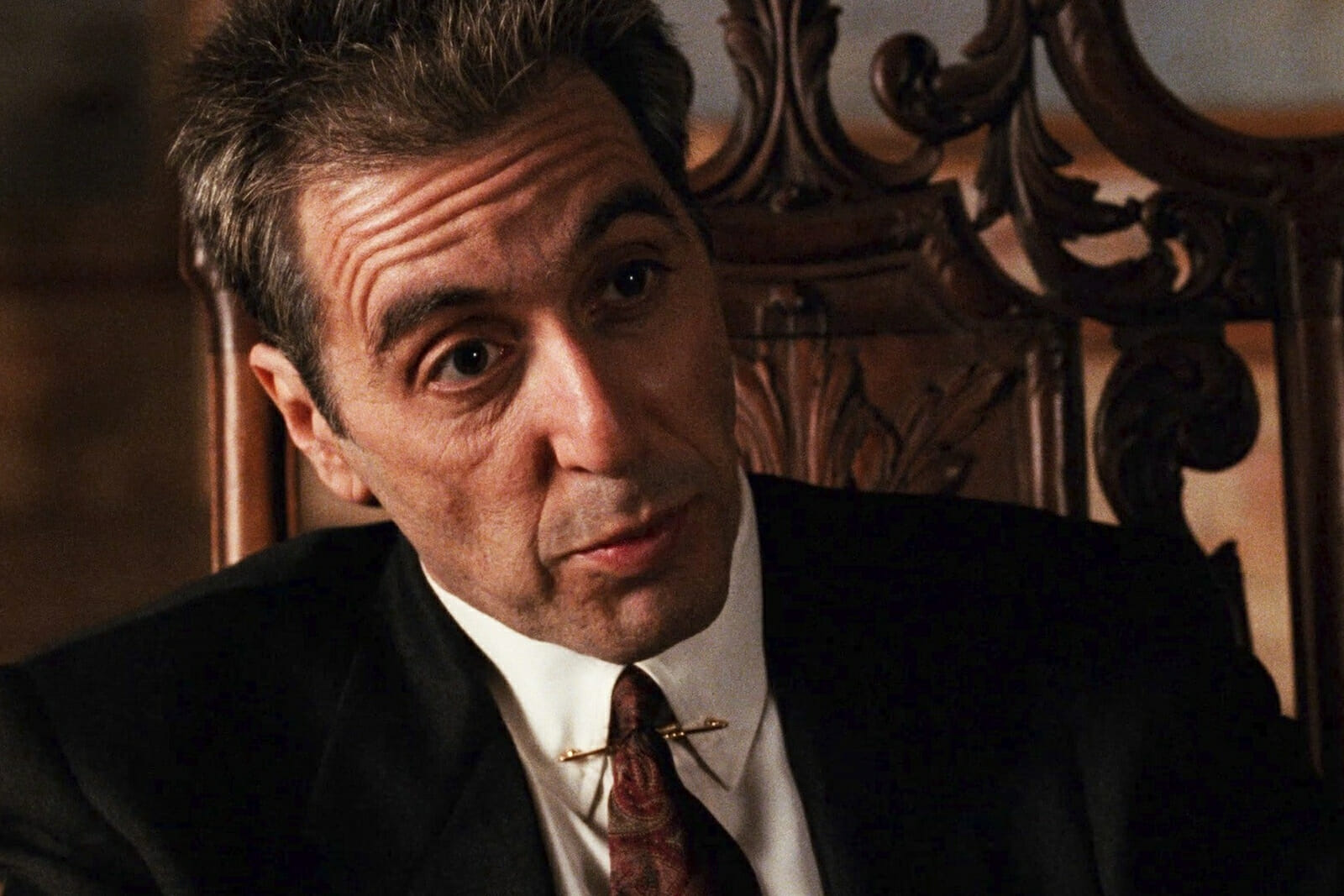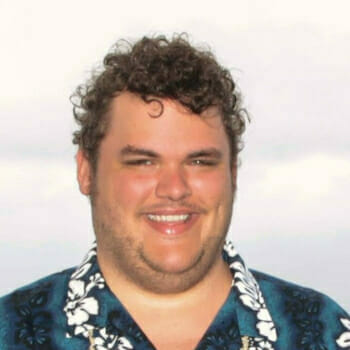
‘The Godfather Coda: The Death of Michael Corleone’ Review
Is The Godfather: Part III, the reviled sequel to two of the greatest movies ever made, as bad as it’s typically made out to be? Well, not exactly. The film has its fans and defenders and was even nominated for 7 Oscars when it was first released. I myself have some respect for the film but I don’t consider it to be in nearly the same league as its two predecessors. Other critics seemed to be mostly positive about it, while still pointing out some major shortcomings, and the movie was a big financial hit.
But, in spite of all that, the film’s flaws are apparent: a complicated plot concerning intrigue at the Vatican (for some reason…?); the critically derided performance of director Francis Ford Coppola’s own daughter Sofia in the pivotal role of Michael Corleone’s daughter, Mary; a strange, chemistry-less, incestuous romance at the film’s core; the lack of Tom Hagen, the family consigliere, played memorably in the previous films by the great Robert Duvall. It was the only Godfather movie not to win the Best Picture Oscar (though it was nominated), the only one for which Al Pacino wasn’t nominated for an Oscar, and the only one not currently on the National Film Registry. Adding to the film’s diminished reputation is that no additional Godfather movies followed, so it remains the conclusion of the franchise. (Although, for my money, an adaptation of Ed Falco’s novel The Family Corleone, itself a prequel to the first film based on an unproduced screenplay by original Godfather novelist and screenwriter Mario Puzo, would make a fantastic movie.)
Now, three decades later, Francis Ford Coppola has recut The Godfather: Part III in honor of its 30th anniversary and retitled it Mario Puzo’s The Godfather, Coda: The Death of Michael Corleone. The new name is an amalgamation of what he and Puzo wanted it to be called before the studio demanded it be numbered as the third installment in the series. This new cut is said to be superior by cutting down on another major complaint about the film, its running time. Coppola has done this sort of thing before, including two different extended cuts of Apocalypse Now, known as Redux and Final Cut, as well as an extended cut of his notorious box-office bomb The Cotton Club that is said to vastly improve upon what was initially released. He, like his close friend and collaborator George Lucas, has continued to go back and meddle in his past films. This time, for one reason or another, the roulette wheel just happened to land on The Godfather: Part III. Maybe Coppola thought he could redeem the film’s reputation, and a new cut of it would reveal strengths and diminish flaws.
This new cut of the film is an improvement on the original, but to what extent is debatable. The film deals with the now-aged Michael Corleone (Al Pacino, at the beginning of a scene-chewing 1990s run that would culminate with his Oscar win for Scent of a Woman). Michael finally wants to go legitimate, so he’s trying to divest himself of the family business, working with the Catholic Church to gain control of a corporation and to reframe him as a giving philanthropist. But hot-headed Vincent (Andy Garcia), the bastard son of Michael’s oldest brother Sonny (played by James Caan in the first film), has reentered the family. Vincent starts a turf war with rival Joey Zasa (Joe Mantegna, meaning the voice of mobster Fat Tony on The Simpsons is officially a part of the Godfather universe). Michael’s sister Connie (Talia Shire) seeks greater influence within the family, his daughter Mary (Sofia Coppola) begins to fall for Vincent (despite the fact that they’re related…?), and his son Anthony (Franc D’Ambrosio) wants to become an opera singer. While in Sicily to see his son’s performance, Michael attempts to chart a new role in his life for his now-ex-wife Kay (Diane Keaton).
The late Gene Siskel commented that much of the strength of the film comes from the scenes where Michael and Kay, portrayed by two of the best actors of their generation, converse with one another. There is raw energy and tension to it, a quiet devastation after so many broken years together. Being back in Sicily also brings back memories from the first film of Michael’s tragic romance with a Sicilian girl named Apollonia. But yet, somehow, this all gets tangled up with the death of Pope John Paul I (for some reason…?), and Michael is forced to pay the ultimate price for his sins. In the film’s most iconic line, Michael screams “just when I thought I was out, they pull me back in!” The line also summarizes much of Michael’s arc in the film, wanting to choose a relatively normal life over the crime lord status he had previously held. It’s why Coppola wanted to call the film The Godfather, Coda: he saw it more as an epilogue than as a good and proper sequel to the first two.
But, the film, even in this new edit, cannot possibly live up to its predecessors, and as such, remains eclipsed by them. And while it is perhaps the film’s most common critique, yes, Sofia Coppola’s performance still brings down the entire affair. Even in this modified version, she simply cannot emote or express the way the film demands of her. Look, I’m as happy as anyone that Sofia has redeemed herself as an auteur writer-director in the mold of her father. Lost in Translation and The Virgin Suicides are two of my favorite movies. But the whole thing reeks of nepotism (especially since Winona Ryder was famously slated to play the role before backing down), and she simply wasn’t up to the task in terms of delivering what is meant to be a pivotal part in the proceedings.
So what changes in this cut specifically? Well, the beginning and ending are different. The beginning of the film in particular moves a scene that explains Michael’s relationship with the Vatican to the front, providing much-needed context. The ending removes a final scene witnessing Michael Corleone’s actual death, which Gene Siskel also called “an embarrassment” at the time. For the first half of the film, everything seems generally tighter and edited more smoothly than in its theatrical-cut counterpart. I watched the film with my parents, both of whom said that it was a vast improvement over the original cut. However, I’m not sure I necessarily agree with that assessment. I’m frankly surprised with how little ultimately got cut, the film still has plenty of fat left to trim. And while a tighter edit is appreciated, it cannot alleviate much of the film’s major flaws. The Vatican stuff is still way too complicated, the Mary/Vincent relationship is still way too creepy (though now it felt more reminiscent of the incest in powerful families that was displayed on Game of Thrones), and Sofia Coppola is still horrendously bad any way you cut it.
Still, I appreciate this updated vision of what the film is and supposed to be. I think Coppola felt motivated to go back because he felt like the original cut was unfairly maligned. This new cut helps him to emphasize what he always believed: Godfather III isn’t a sequel, it’s an epilogue. The Godfather Coda: The Death of Michael Corleone is now a distinctive addition to the Godfather trilogy, different enough from its originator to be worth seeking out for those curious enough to want to.

